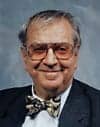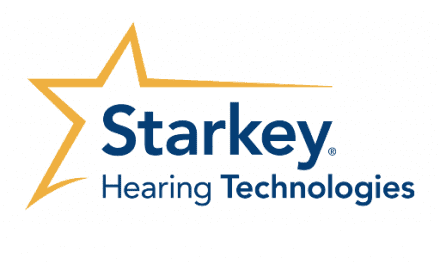Opinion | March 2015 Hearing Review
Editor’s note: The following is adapted from Part 1 of a 2-part article in the October 30 and November 6, 2013 blog of Kevin Liebe’s Hearing Views at HearingHealthMatters.org, and appears here with permission.
Aural rehabilitation is still key to serving the needs of those with hearing impairment and is a service for which audiologists are uniquely qualified.
By Maurice H. Miller, PhD
Audiologists must be engaged and committed to aural rehabilitation or our future is uncertain and cast with enormous doubt. Long-term individual involvement with the hearing-impaired patient in a rehabilitative structure to which the audiologist is dedicated is essential. Without it, our future is uncertain. With it, there is enormous hope for our profession.
I write this article from a serious and profound concern for the future of audiology as I have known it and served it for well over half a century. A major problem exists: audiologists have concentrated so much on the “testing” and “fitting” aspects of hearing aids that many of our practitioners feel less comfortable than speech-language pathologists in performing long-term rehabilitative services; this despite the inclusion of auditory rehabilitation under various designations in course work and practica at so many of our universities.
The present state of performed (or not performed) audiologic rehabilitation services by audiologists is alarming. ASHA’s 2012 survey of 2,000 ASHA-certified audiologists from a variety of work settings found that only 17% provide “auditory training” and 4% provided speech reading/lip reading. There is much current focus on the instrument and so little on the rehabilitation of the user.
Let me stress at the outset that this discussion focuses only on adults, primarily the “elderly.” Children are often served by a “team” that includes audiologist, speech-language pathologists, otolaryngologists, pediatricians, social workers, psychologists, and others, which, at its best, provides diagnostic findings and makes joint recommendations for the diagnosis, therapy, and other indicated interventions.
Looming Problems
Some practicing audiologists (many of whom I have trained) tell me that the difference in hearing aid prices between Costco and similar operations is that the hearing-impaired patient is welcomed by the audiologist to revisit after the trial period as many times as he/she wishes at no additional cost. But this is a totally ineffective way of providing the audiologic rehabilitation that these patients, especially the elderly, and especially those with associated cognitive problems, desperately require.
I fear that unless we provide the audiologic rehabilitative services and associated services (counseling—often long-term, situationally determined use of amplification) on an organized, scheduled, initially in-person basis, our future and that of those we serve is in deep jeopardy. Increasingly, the technology for hearing testing and hearing aid fitting can be performed equally well by the audiologist or the dispenser, or by a technician or even by appropriate technology. And we are left with a huge increasingly elderly population whose auditory problems are both peripheral and central.
Amplification can benefit those with peripheral auditory impairments to varying degrees, but less so in the case of central processing disorders, unless it is accompanied by necessary individualized rehabilitation services. Moreover, charging 3-4 times more than some massive distributor services and telling the patient after the hearing aid(s) is sold to “come in if you have a problem” is not an appropriate or defensible recommendation.
In the World War II era, we could require a comprehensive total rehabilitation program. But our present primarily elderly population is not subject to the same controls that military audiologists could exert over their patients. In the absence of insurance coverage, and with an orientation that after paying many thousands of dollars for hearing aids they should resolve all hearing problems, we are left with many expensive, fully digital, carefully programmed hearing aids in the proverbial dresser drawers of this generation.
How Did This Situation Evolve?
The rapid evolution of Audiology as an independent and sustaining specialty occurred during and after World War II. The object was to rehabilitate individuals who had sustained service-connected hearing loss. In this role, in addition to diagnostic services, audiologists then provided a host of rehabilitative services, including hearing aid selection and use, speech (lip) reading and auditory training (often in group classes), patient counseling and support in understanding and adjusting to the hearing loss. In providing these services, we were acting as case managers rather than technicians or diagnosticians. Mark Ross1 has correctly stated that, regardless of how well we administer and interpret sophisticated diagnostic procedures, we basically remain technical support persons for the medical profession.
It is when we are the profession responsible for evaluating and managing the communication disorder and handicap imposed by a hearing loss that we fully come into our own as independent professionals.
The practice and progression of audiologic rehabilitation, Ross states, was not comparable to the growth of the medical/diagnostic role when the field moved into academia and into the world at large after World War II. Instead of audiologic rehabilitation being a core and defining activity, it has moved into the distant periphery of the profession. In many academic programs, it has been relegated to one or two courses in speech reading and auditory training and often assigned to the lowest-ranking professionals in the department. For example, speech reading and auditory training are often taught by master’s level audiologists while the doctoral level professors teach primarily in the diagnostic area. We still pay lip service to audiologic rehabilitation and claim it philosophically as our own, but we in academia “just don’t do it.”
The Reimbursement Issue
There are ongoing and much needed efforts to reimburse audiologists for “aural and vestibular rehabilitation” in addition to diagnostic services under Medicare. If enacted, the proposed Medicare Services Auditory Enhancement Act (HR 2300) will, hopefully, provide the necessary impetus to move audiologists into the rehabilitation arena that our patients so desperately require and that we alone can provide, if willing and trained to do so.
Scope of the Problem
Data on the prevalence of hearing loss in adults are striking. According to the World Health Organization (WHO), over 360 million people—or about 5% of the world’s population—have some degree of disabling hearing loss. In the United States, the figure often quoted is 28 million, although this is probably a significant underestimate. Yet the number of people who receive competent rehabilitative care remains disappointingly low. In part, this is because most adult hearing loss occurs gradually, without pain or noticeable discomfort, making it a condition easy to deny and to delay care.
Uniting the Profession
Audiology has unfortunately faltered since Alpiner and McCarthy2 concluded, in 1973, that there was one common thread that should hold audiologists together: “Their practice and engagement in the aural rehabilitation process.” Whatever else we do, “rehabilitation of individuals with hearing loss was and must be ‘the uniting goal of the profession.’”
The founders of the profession would have been amazed and disturbed if they had lived today to see how far we have strayed from our rehabilitation roots. The decline of the initial emphasis on rehabilitation was also influenced by the lack of insurance coverage for these services when performed by audiologists—a situation that exists today under lack of medical reimbursement.
The Importance of Group Experience
Individual audiologic rehabilitation is essential, but it needs reinforcement and supplementation with group experience. The group experience is central since communication is a group activity involving interaction with another, or quite often, several others. But initial therapy must be performed on a one-to-one basis; the audiologic rehabilitationist must determine when the patient is ready for group interaction.
The audiologic rehabilitation clinics established by the military recognized this and led to development of “listening clinics” created to “place these people back into effective communication with their fellows and their environment.” The curriculum included:
1) Daily individual and group lip reading instruction;
2) Counseling, including personal, economic, or domestic problems; and
3) Maintenance of contacts with the patient’s family.
In addition, it bridged the gap between veterans’ facilities and those civilian agencies that would continue to provide any additional rehabilitation measures that might be needed. The intensity and necessity of ongoing rehabilitative measures beyond the 8-week course is evidence of the degree to which rehabilitation measures were recognized and considered essential to the recovery process, even in the much younger population than we serve today.
That was in the 1940s, and as Ross admitted, it may have been a bit overzealous,1 and requires modification for a primarily aging population. The military and VA clients of the 1940s were a “controlled population” whose schedule could be determined and managed by those in charge. Lack of insurance coverage for rehabilitation was not the problem then that it is now, and much of the rehabilitative approach needs radical modification since the VA population hardly lacked the motivation of the elderly population that challenges us today.
Motivating the elderly presents special challenges that require the most imaginative, dedicated, and insightful audiologic practitioners in the profession. True audiologic rehabilitation precedes, as well as accompanies and follows, all aspects of the hearing aid fitting process. It must not be a casual recommendation (eg, “Come by if you have a problem with your hearing aid or your hearing”), but rather an organized scheduled set of visits usually over a period of months, especially with the elderly segments of our population.
However, as Alpiner and McCarthy2 stated 6 decades later: “Even a few hours of post-hearing aid fitting rehabilitation is rare.”
Conclusion
Audiologists must rehabilitate or our future is uncertain and cast with enormous doubt. Long-term individual involvement with the hearing-impaired patient in a rehabilitative structure to which the audiologist is dedicated is essential. Without it, our future is uncertain. With it, there is enormous hope for our profession.
Acknowledgement
My profound appreciation to James Jerger, audiology’s most prolific scientific contributor and intellectual leader of the profession. His comments, suggestions, and corrections made this article what it is and I am most appreciative of his working with me on its final preparation.
References
1. Ross M. Aural rehabilitation: Some personal and professional reflections. Hearing Review. 2001;8(9):62-67. Available at: https://hearingreview.com/2001/09/aural-rehabilitation-some-personal-amp-professional-reflections
2. Alpiner JG, McCarthy PA. Rehabilitative Audiology: Children and Adults. Baltimore: Lippincott, Williams & Wilkins; 2000.
Maurice H. Miller, PhD, is Professor Emeritus of Audiology at New York University Steinhardt School of Culture, Education and Human Development. Throughout his career, he has directed programs in Communication Disorders at some of the nation’s leading medical and academic institutions and spent over 40 years as the Chief Audiological Consultant to the New York City Department of Health. He is the author of five books, over 120 articles in peer-reviewed journals, and numerous monographs and chapters in audiology textbooks. Dr Miller was the second person to receive the Lifetime Career Award from the American Academy of Audiology and is a member of The Hearing Review’s editorial advisory board.
Correspondence can be addressed to Dr Miller at: [email protected]
For more articles by Dr Miller, which include the topics of genetics and deafness, syndromic hearing loss, asymmetrical hearing loss, and industrial hearing conservation, type “Maurice H. Miller” into the search function on The Hearing Review website.
Original citation for this article: Miller, M. We Must Return to Our Rehabilitative Roots. Hearing Review. 2015;21(3):16.





